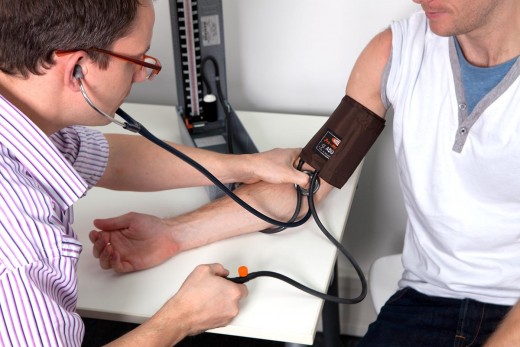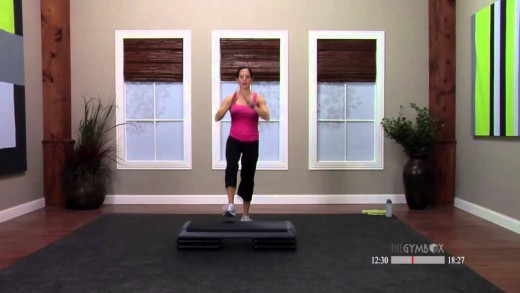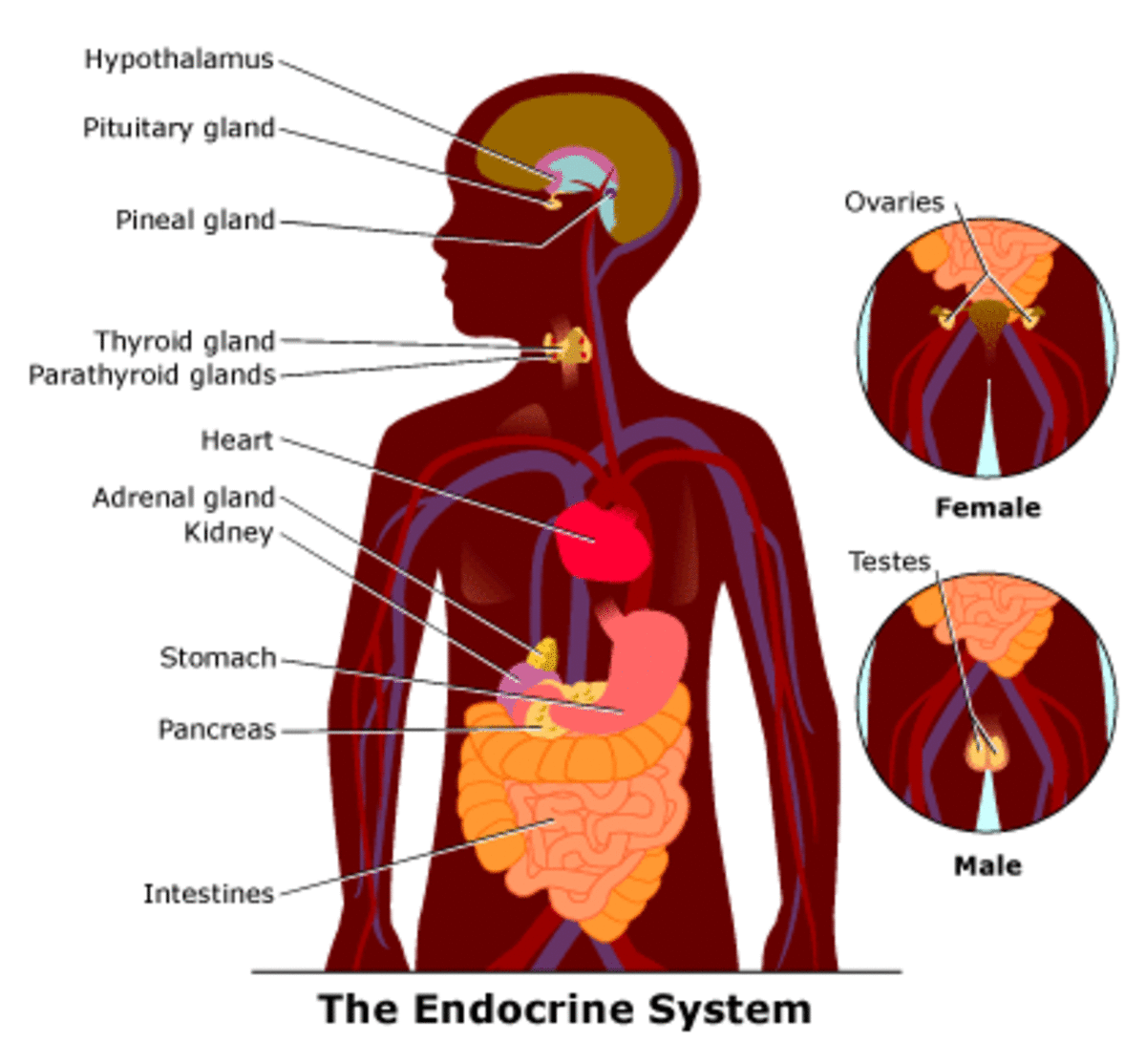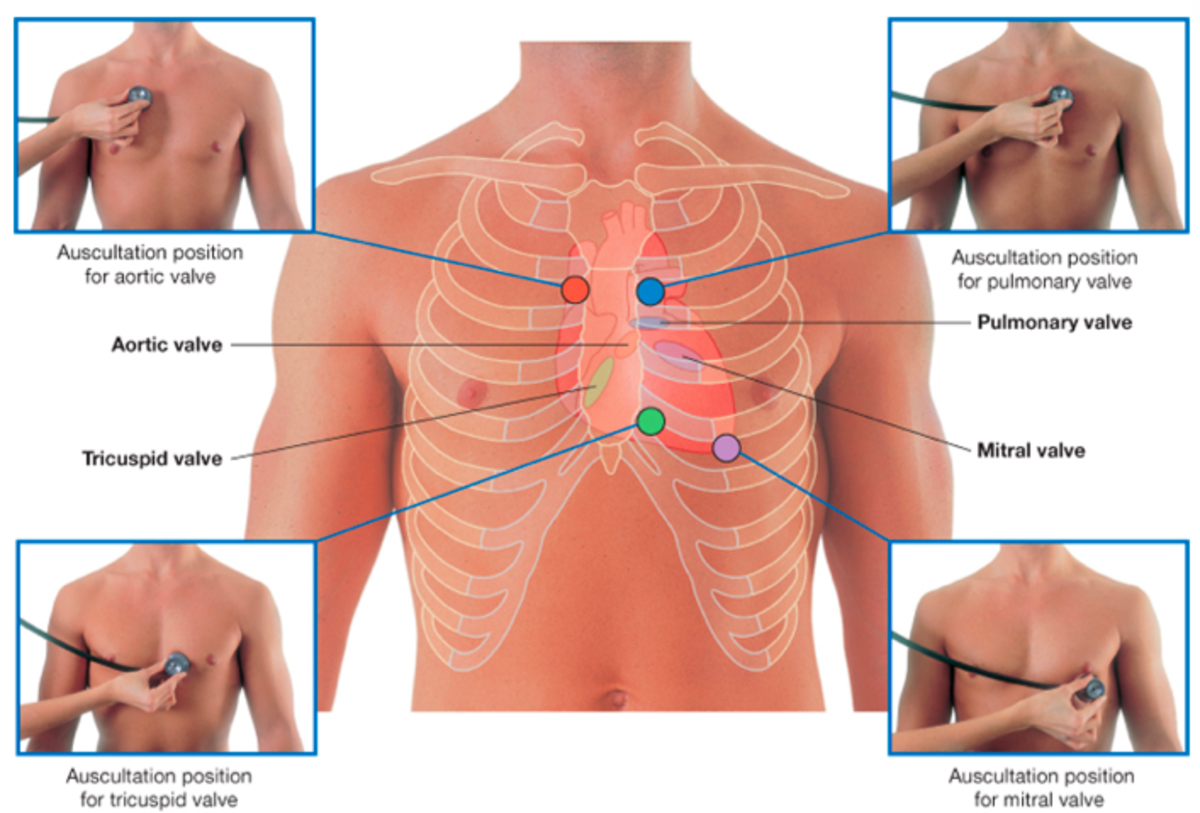Cardiovascular Effects of Exercise
How to take blood pressure

Background
The arterial system acts as a reservoir with blood entering via the heart and existing through the capillaries. Signals from the autonomic nervous system control the tone of smooth muscle sphincters around the arterials. It is against this peripheral resistance that the left ventricle pumps blood.
The pressure in the arteries varies during the cardiac cycle. The ventricles contract and push blood into the arterial system (systole) and then relax (diastole) to fill with blood before pumping once more.
The back pressure of blood leaving the tricuspid and bicuspid (mitral) valves causes a flapping closure of their cusps giving rise to Heart sound I, easily heard on auscultation. Heart sound II soon follows as the cusps of the higher pulmonary and aortic valves close with a sharp loud clap at the time of ventricular contraction.
The blood flowing around the circulatory system (cardiac output) may be increased to many times its resting value.
Parameters in CVS that change during exercise.
- Increased oxygen demand requiring increased rate of blood flow.
- Increased muscular movements affect pumping and blood distribution.
Desired results ; Increased Cardiac Output.
Measurable parameters that change;
- Cardiac Output. = Heart rate x Stroke Volume
= 72 beats/min. x 70 mls
= 5000mls/min. (5L/Min)
NB; Stroke volume increases minimally with increasing fitness, hence a HR of 65 beats/minute can achieve adequate CO in a sportsperson.
2.Blood pressure
Blood Pressure = Cardiac output x Peripheral Resistance
Peripheral arteriolar network is the most important contributor of PR and is an expression of;
- Vasoconstrictive tone or catecholamine tone
- Alpha adrenergic receptors on the small arterial smooth muscle walls
NB; Receptors downgrading lowers diastolic pressure at onset of exercise, the fitter the subject, the less the rise in BP
Havard step test
The Havard step test is a standard exercise test used in assessing physical fitness. It consists of stepping on and off a stool 20 ins. high at the rate of 30 cycles per minute. Each cycle consists of the following consequence. Right leg up, left leg up, right leg down, left leg down. The movements may be timed with a metronome.
Record resting (sitting) BP and pulse rate. The subject then performs the Harvard step test, with the cuff fixed, in place on his right upper arm for a period of 5minutes (300 seconds). As soon as the exercise is over, the subject sits down, and pulse counting and blood pressure determinations commence.
Determine
(a) Number of pulse (or heart) beats is taken immediately and at 30 seconds interval after the exercise for 5 minutes.
(b) BP (systolic and diastolic) is taken immediately after the exercise and then at 1minute (60 seconds) interval for 5 minutes.
Draw graphs showing the relation between time after exercise against pulse and blood pressure.
Calculating the fitness index =
(1)
Total duration of exercise in seconds x 100
2S
Where 2s is the total number of Heart beats in half minutes.
(i) 1' to 1' 30"
(ii) 2' to 2' 30"
(iii) 3' to 3' 30"
Interpretation:
Above 90, excellent
70 - 89, Very good
65 - 79, Good
55 - 64, Fair
Below 55, poor.
Resting pulse varies from person to person,but on average,it is between 60-80 beats per Minute.For athletes,a normal resting Heart rate may be closer to 40 beats per Minute.
(2)
Duration of exercise in seconds x 100
sum of systolic pressure at 1,2 and 3 min after exercise
(Pressure in mm. of mercury).
Average normal systolic pressure is about 80,
While average normal diastolic pressure is about 120,
The more you exercise,the lower your resting pulse ,a sign of a healthy heart.
Havard step test exercise









